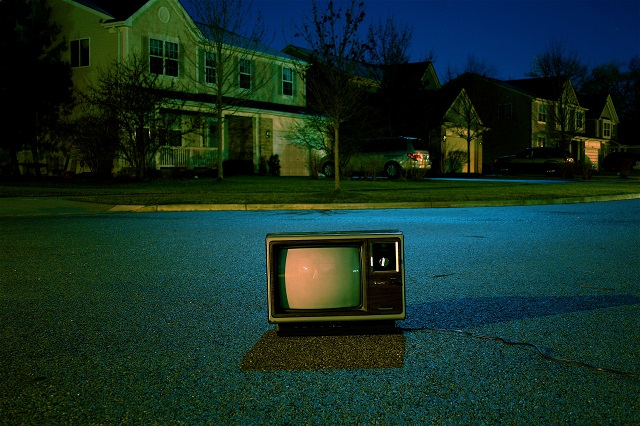Life is hectic and stressful—we work long hours and the little time we have to ourselves is jam-packed with errands and responsibilities. It feels like we never have enough time.
All the while, media and society are in our face telling us, “That’s not enough. You need to own more, do more.”
In 2008 I decided I’d had enough. This concept didn’t seem right or worth it; and a wailing inside told me to stop and reevaluate my lifestyle. It was then that I embarked on a seven-month backpacking odyssey into the backroads of Asia, exploring different Buddhist traditions and advancing my meditation practice. I was determined to find the key to greater peacefulness in my life.
It was a life-changing journey, and this adventure—the people, the land, the culture and the Buddhist Masters I met—became the basis for my book Caves, Huts, and Monasteries: Finding the Deeper Self Along the Footpaths of Asia.
As I lived with people who have extraordinarily simple lifestyles, an insight into my inner angst began to form. High in the Himalayas I met mountain villagers who owned almost nothing and were raised from birth to put the needs of others before their own. I saw happiness and contentment there.
I stayed with an Indian desert family in their straw-roofed hut where they walked in bare feet and traveled by camel and cart. I saw happiness and contentment there.
I stayed in numerous Buddhist monasteries with monks who slept on the floor, owned only their robes, and spent their waking hours either in meditation or helping others. I saw happiness and contentment there.
I met and talked with common folk, people with few belongings, and so often our discussions would end with this advice: “Money means nothing, sir. Materials mean nothing, sir.” I saw happiness and contentment in them.
Over and over, I compared their simple lives to mine and wondered: Why are these people with almost nothing so happy and content?
I saw no link between having and happiness. But why not? My life is much easier than theirs. I have hot, running water at the press of a button, a house that is heated and air-conditioned, soft and comfortable furniture and a car at my fingertips to go anywhere at any time. I have a lot.
This conundrum dwelled in my mind for many weeks. And then I saw the link: there is more cost to ownership than shown on the price tag.
For each item we own, there is a “Real Ownership Cost,” which includes the time, effort and anxiety we experience throughout the life cycle of ownership. Aha! Deciding what to purchase based only on the price tag is where we’ve gone wrong.
Here’s where things become unorthodox. We’re talking about effects on our life here, not pocketbook cost. So let’s throw the concept of money out the door for a moment. I want to measure Real Ownership Cost in terms of time and anxiety—after all, isn’t that what we complain about? There’s always too little time and too much anxiety. Isn’t having time to enjoy oneself in a peaceful manner a good measure of quality of life?
Since we can’t pull out a calculator to evaluate this cost, we will make this a subjective evaluation. Doing this raises awareness of what we do in our lives—this is applied mindfulness.
If we calculate the Real Ownership Cost for all the things we own, we will find that ownership is a significant cause of the busyness and stress we so often complain about. We need to somehow consider this cost upfront before embarking on a purchase.
Let me give you an example of Real Ownership Cost—I’ll use a television purchase to demonstrate.
- We want to own the latest, greatest television. We think about where it will go, if we can afford it, and how we will pay for it. There’s time, and a certain amount of stress, involved with all this. Your mind is grabbing; it is occupied and somewhat heavy. You’re already being pulled from the present moment.
- We decide to get the television, so it’s time to shop. We spend time on the Internet, going to stores, dealing with salespeople and even experience anxiety about the possibility of getting ripped off. We want to get the best deal, right? For me this is a stressful and time consuming process.
- We find the right television and purchase it. How much time did we have to work to earn the money for the purchase and taxes? If we’re prone to calculate, we divide the total cost by our hourly rate. Wow, did we really work two weeks just for a TV?!
- Now it’s time to bring our purchase home. We travel to pick it up, pack it into the car, bring it home and carry it inside, all the while worrying about dropping or scratching it. More time and stress—just add it in.
- It’s set up time. We take time to figure out where to put it, read the instructions and once again feel worry and frustration about whether we’re doing it right. Maybe we need to buy more cables—another trip to the store. Maybe we need to call tech support—there goes a few more hours of our lives!
- Great, the TV is working. But it’s so nice and now we’re worried it’ll get stolen. Maybe we should buy insurance. Oh, and be careful not to scratch it when we walk by. We want to protect our belongings, that’s a background stress that’s always there. The mind is not light.
- Six months later the color is distorted. We need a repair man. How much time did we have to work to earn the money for that repair? How much time to arrange for the repair? Did we lose time from work? More to add.
- Two years later a new “Smart TV” hits the market and we decide we have to have it. But the lifecycle of the old one isn’t over yet because now we need to get rid of it. It takes time and energy to sell it, trade it in, move it or throw it in the trash. More time and worry to add to the list.
- Then there’s what I call the “anchor effect.” Life has a way of changing course unexpectedly and now we have to move. Here we go again—packing up our purchase, moving it to storage or into our new place, worrying (again) about damage and insurance. With a house full of stuff, we are neither mobile nor flexible in our lifestyle. We are stuck like a boat anchor.
- Finally, there is the somewhat intangible, but very real environmental issue of ownership. Buddhists know that everything is connected and what affects any living being affects ourselves as well. Every item produced takes from the earth, consumes energy, contributes to climate change and ends up as some form of pollution. Our consumption comes back at us in often subtle but negative ways.
The above example is different for every person and every item we consider. And it doesn’t just apply to large items. When we look at the full lifecycle effects of ownership, there is much more than meets the eye, and extending the consideration to all the items we own accounts for a significant part of our daily struggle with time and anxiety.
Don’t get me wrong, this isn’t the sole key to a “lighter mind”—only a component. We still have a lot of inner work to do to recognize the cravings and attachment to non-material items that produce anger, jealousy and unhappiness. And I’m not suggesting we renounce everything, shave our heads and wear a robe. The point is awareness: if we are aware of all the negatives that come along with that desirable item, we might well choose otherwise. Meditation is one tool to help gain that level of awareness.
It took an extended time living in third world situations before I recognized the link between ownership, time and stress. Sure, we’ve heard the great sages tell us not to get caught up in earthly things, but that all seems high and holy, doesn’t it? Everyone around us own plenty, so striving for more seems normal.
But don’t take my word for it. Take a look at the things around you and mentally consider all the time, effort and anxiety that went into them. Notice the small increments of time spent and worry created in engaging with belongings as you go through your daily activities. Multiply the effect times all the things you own.
Several friends of mine have done this to varying degrees and each reported a lightening of their life, a release of burden. One went through all his belongings and sold everything he could reasonably do without—right down to the unopened bottle of shampoo he didn’t intend to use. Not only did he “lighten his load,” but he had fun doing it.
Having less is like removing a ball and chain from one’s foot. First, we find more financial flexibility. Think about how much less stressful work would be if we didn’t have to worry about how to pay for all our purchases. Next, we find more available time. Here’s an opportunity to add to our meditation practice or volunteer in your community. Exercising compassion is easier without the burden of added stress.
So what’s stopping us from releasing a belonging? I often hear people say, “I might need it sometime.” But we can always buy another if we truly need to. I suggest trying to get by without it. Be creative with what you have and you might be surprised.
From a Buddhist perspective, this is addressing the root causes of our suffering: desire and attachment. Watch your mind as you consider relinquishing an item. Observe the clinging, grabbing and resistance of the mind. It is literally uncomfortable at times. Don’t fight it, just acknowledge it and then act appropriately. If the mind resists too much, let it be, drop the issue and resolve to revisit it at a later date. You may find at a later date that the mind has naturally comes to terms and is ready to let it go.
We need to focus on us: raising our awareness and lightening our load. With this mastered, we can move on to the larger societal problem of consumption.
Real Ownership Cost is a perspective, not an equation. It allows us to see how the cumulative invested time and anxiety over the lifecycle of ownership contributes to the busyness and anxiety in our lives. Ownership is best evaluated from a holistic viewpoint that focuses on the total impact on our lives. When purchasing and consuming becomes a conscious choice not driven by sublime desire, we will lighten our lives and our minds.
Author: Mark S. Kacik
Image: Frank Okay/Unsplash
Editor: Nicole Cameron







Read 1 comment and reply